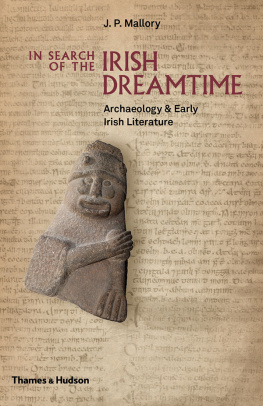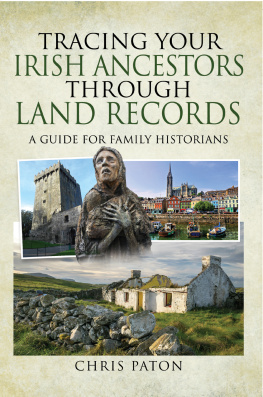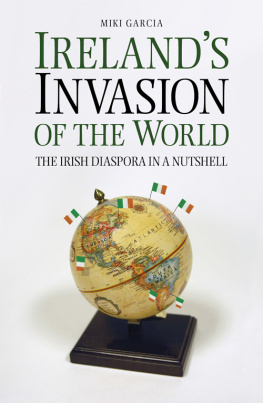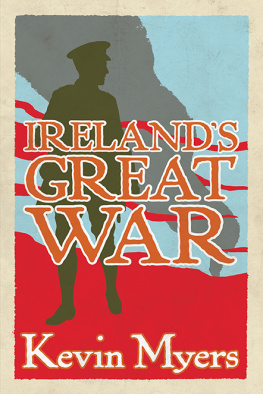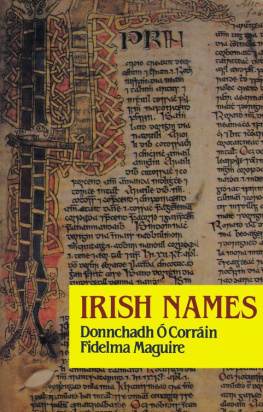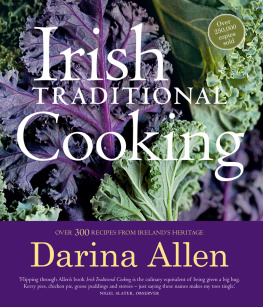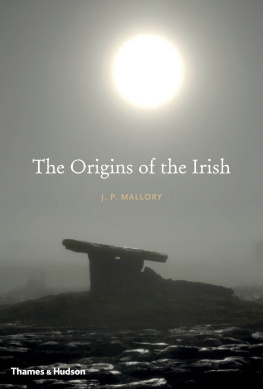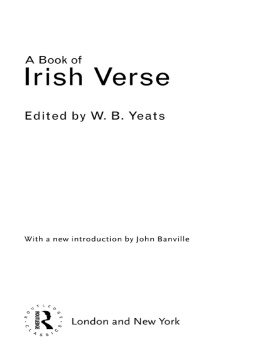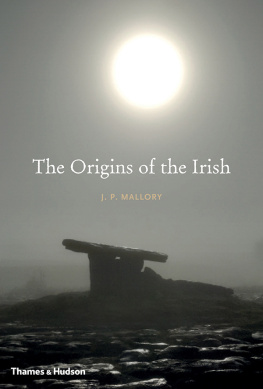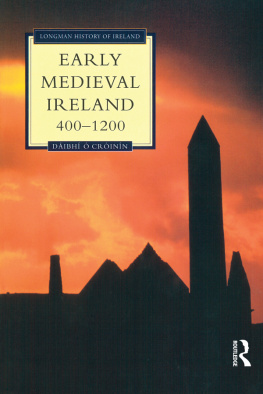
About the Author
J. P. Mallory is a world expert on the interconnection of archaeology and linguistics, and is the author of The Origins of the Irish, In Search of the Indo-Europeans and The Tarim Mummies, all published by Thames & Hudson. He is Emeritus Professor of Prehistoric Archaeology at Queens University Belfast and a member of the Royal Irish Academy.
Other titles of interest published by
Thames & Hudson include:
The Origins of the Irish
The Tarim Mummies: Ancient China and the Mystery of the Earliest Peoples from the West
Ancestral Journeys: The Peopling of Europe from the First Venturers to the Vikings
Bog Bodies Uncovered: Solving Europes Ancient Mystery
See our websites
www.thamesandhudson.com
www.thamesandhudsonusa.com
Contents
It all started in the summer of 1968 when I walked into a Galway pub and met an Irishman who had fought with Alfred the Great. I still recall how I fell in with two drinkers, one a retired soldier in the Irish army who was quite unimpressed that an archaeologist could not write out Cleopatras name in hieroglyphics (he could and did so to show me up). The other drinker was much younger, an Irish soldier whose hands were bandaged from a recent boxing match, and claiming that he had fought with Alfred the Great. I knew I looked gaunt but I didnt think I looked that simple minded until he explained that he really had fought with Alfred. The film Alfred the Great had recently been shot around Galway and, I presume, he and other members of his unit had either been banging their swords on shields under the command of Michael Yorks Viking Guthrum or making up numbers in David Hemmingss Anglo-Saxon caput porcinum or flying wedge.
The following day, a Sunday as I recall since there seemed to be no public transport, I attempted to hitch my way eastwards. As chance would have it, I had the incredible good fortune to be given a lift by kind-hearted Paddy Healy who was on his way to the Castlestrange stone in Roscommon, one of the few decorated La Tne stones known in Ireland. There we met up with Michael Duignan and his wife who were studying the stone. Michael was Professor of Celtic Archaeology in the National University in Galway and had already undertaken a study of the more famous (and larger) Turoe stone. Later that afternoon I went on my way and did not meet Michael again for nearly ten years, when I was invited to Galway to give a lecture. Only then did I discover that Michael had served as a technical advisor on Alfred the Great (though I hardly think he was responsible for putting an Irish round tower in the Wessex landscape).
In 1978 I was invited to contribute a paper to Michael Duignans festschrift. As I had recently reread Kenneth Jacksons The Oldest Irish Tradition, this stimulated me to pour through every reference to swords in the Ulster cycle of tales to see how well they accorded with Jacksons passing statement that they reflected the type of swords employed in the Iron Age. For the festschrift, I published my paper on The sword of the Ulster cycle. During the following year when I was desperately seeking some topic to convince the Institute of Irish Studies at Queens University to appoint me their Senior Research Fellow, I proposed to make a thorough examination of the material culture of the Ulster tales. After my appointment, I found myself daily pouring through the tales, writing down information on 3 5 index cards, then transferring them onto sheets of paper, and eventually (with help from a graduate student who is now Professor Gregory Toner) inputting them onto my brand new Amstrad.
Since then I have occasionally published or edited work on the archaeology of early Irish literature, largely as a release valve from other research. Escaping into the worlds of Lug, Nuadu, the Dagda, C Chulainn, Emer, Fergus, Medb, Conchobar, Deirdre, Conall, Fintan and the others has always provided welcome displacement activities. But the Ulster cycle also managed to penetrate my more professional duties and I was fortunate enough to direct excavations at Haugheys Fort, the Late Bronze Age hillfort nearly adjacent to the centre of the Ulster tales and, finally in 1998, to excavate the ditch that surrounded Emain Macha, the ancient capital of Ulster.
This book, written in retirement, was initially intended to bring together many of the things that I had written about earlier. But once I began reviewing and updating the literature I realized that I would need to expand my view, incorporating much more recent research and also re-thinking earlier conclusions. I also discovered that there were still far more problems to deal with than I had earlier imagined and, I am afraid, enough of them still remain to keep another generation busy.
In a way, this book is a companion to my earlier The Origins of the Irish (2013) that attempted to examine the various origins of the land, people and language of Ireland up until the early Middle Ages when we can talk with certainty that we are dealing with a population that is recognizably Irish. In that book I set aside a short chapter, briefly summarizing (and dismissing) the native Irish account of their own origins as a series of invasions. This book is an attempt to revisit the native account in much greater detail but from a very different perspective. It should be emphasized that this book is not an attempt to recover or examine the mythology of the Celts across the Irish landscape. John Waddell has recently tackled this very subject. Rather, this is an exploration into the actual reality of the traditional Irish version of their earliest history that, at least since the Middle Ages, has claimed to offer the longest account of any nation in Europe.
In writing this book I wish to thank John Koch and my long-time academic sparring partner Richard Warner, for reading an earlier draft and attempting to reduce the number of outright howlers that I might have perpetrated on the public. Also, a very big thanks to Libby Mulqueeny of the School of Geography, Archaeology and Palaeoecology at Queens University, Belfast, for preparing the illustrations. And thanks also to those whom I have pestered to supply me with essential reading material, information and illustrations (Finbar McCormick, Mark Gardiner, John Waddell, Paul Gosling, Phil Macdonald, Noel Ross, Raimund Karl, Chris Lynn and Jackie McDowell). A special thanks to Colin Ridler for encouraging me to complete this project and, especially, Ben Plumridge, who both edited my far from perfect manuscript and oversaw the layout of this book. And a final thanks to Tom Gordon Mallory who has had to endure countless treks to the graves of people who never existed.
On 17 May 2011 Queen Elizabeth II, beginning her three-day tour of Ireland, visited the Garden of Remembrance in Parnell Square, Dublin. Established to commemorate those who had died in the cause of Irish freedom between 1798 and 1922, the garden depicts the disposal of the weapons of war, with images of shields, swords, scabbards and spears lying at the bottom of a long cruciform pool. At the head of the pool one encounters a large sculpture depicting a scene from one of the most iconic of the tales of early Ireland, the Children of Lir, who were turned into swans by a jealous stepmother ().
Most nations would be content to consign such a story to a timeless mythological past. But not the Irish whose chroniclers set the tale to the generation after the reign of Eochaid Ollathar who died in 1740 BC. Eochaid was the twelfth named king in Irelands history and the medieval Irish have left us records of the events that occurred on the island since its first occupation. The account of the colonizations of Ireland describes not only the sequence of successful and unsuccessful attempts at settlement but also the making of the Irish landscape, the formation of its major rivers and lakes. It describes how kings and heroes introduced innovations to Irish culture, cleared forests, established fortifications and developed new symbols of power, wealth and technology. And once the land was fully settled by populations directly ancestral to the present population of Ireland (
Next page
